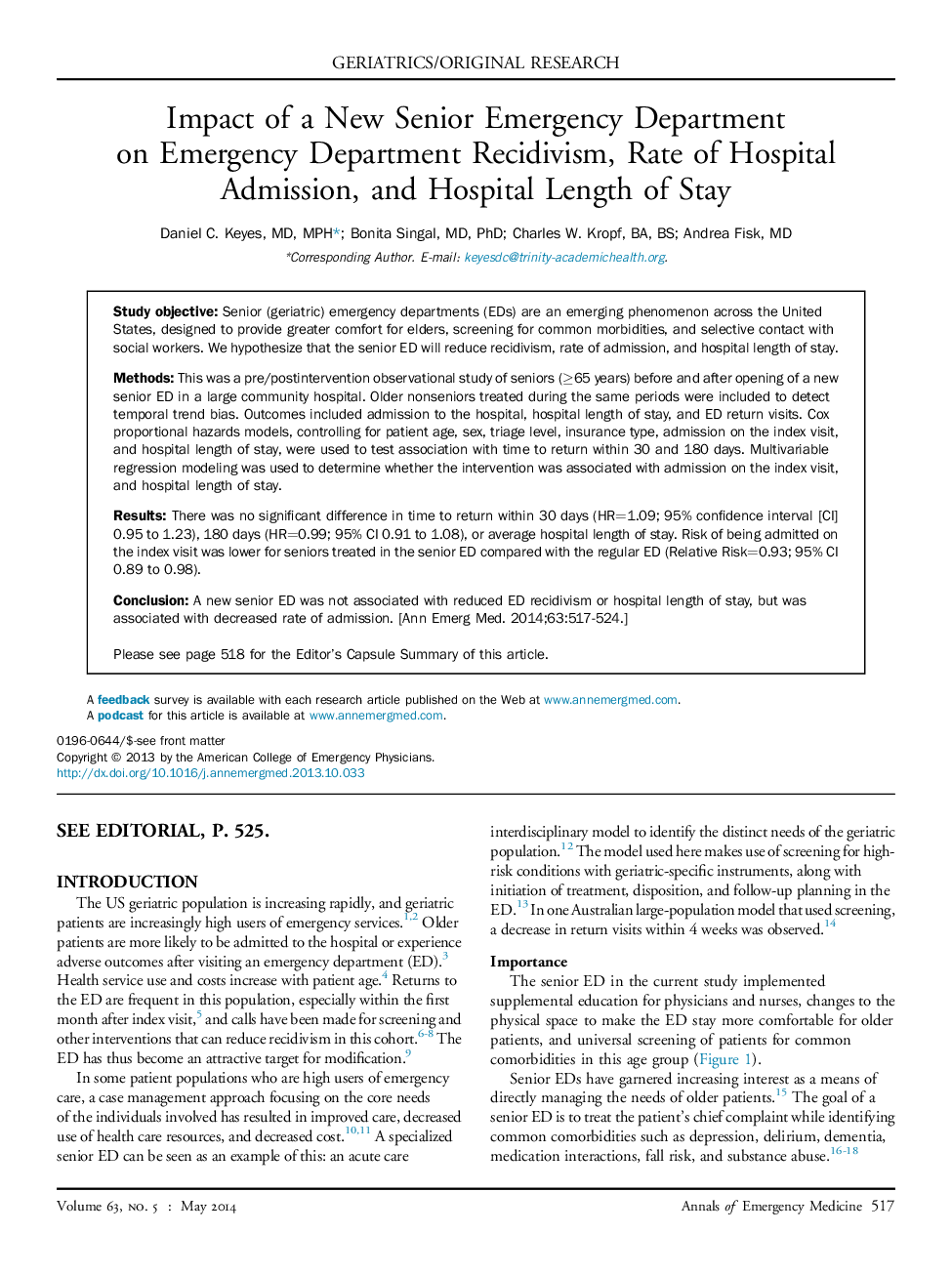| Article ID | Journal | Published Year | Pages | File Type |
|---|---|---|---|---|
| 3229381 | Annals of Emergency Medicine | 2014 | 8 Pages |
Study objectiveSenior (geriatric) emergency departments (EDs) are an emerging phenomenon across the United States, designed to provide greater comfort for elders, screening for common morbidities, and selective contact with social workers. We hypothesize that the senior ED will reduce recidivism, rate of admission, and hospital length of stay.MethodsThis was a pre/postintervention observational study of seniors (≥65 years) before and after opening of a new senior ED in a large community hospital. Older nonseniors treated during the same periods were included to detect temporal trend bias. Outcomes included admission to the hospital, hospital length of stay, and ED return visits. Cox proportional hazards models, controlling for patient age, sex, triage level, insurance type, admission on the index visit, and hospital length of stay, were used to test association with time to return within 30 and 180 days. Multivariable regression modeling was used to determine whether the intervention was associated with admission on the index visit, and hospital length of stay.ResultsThere was no significant difference in time to return within 30 days (HR=1.09; 95% confidence interval [CI] 0.95 to 1.23), 180 days (HR=0.99; 95% CI 0.91 to 1.08), or average hospital length of stay. Risk of being admitted on the index visit was lower for seniors treated in the senior ED compared with the regular ED (Relative Risk=0.93; 95% CI 0.89 to 0.98).ConclusionA new senior ED was not associated with reduced ED recidivism or hospital length of stay, but was associated with decreased rate of admission.
